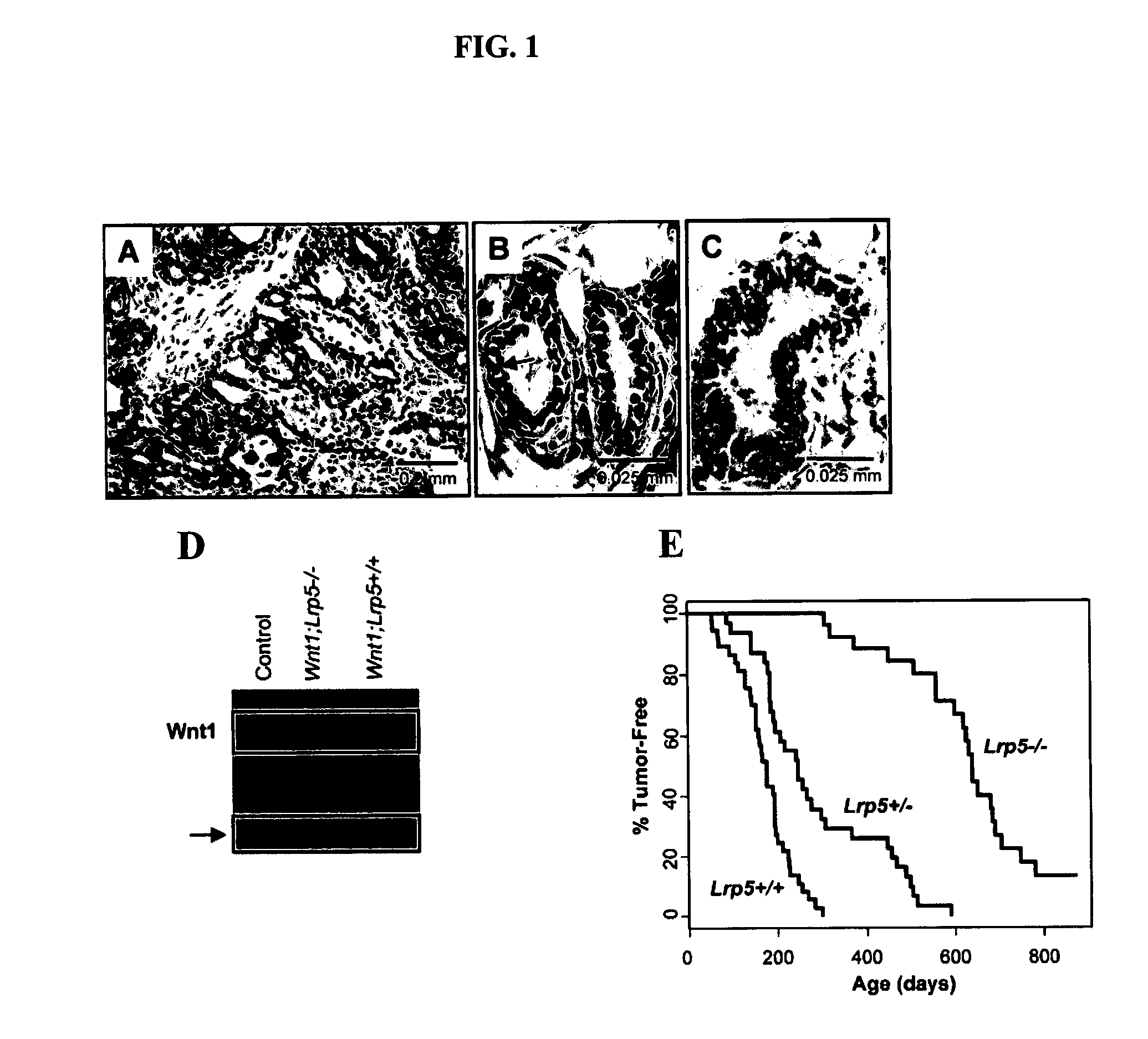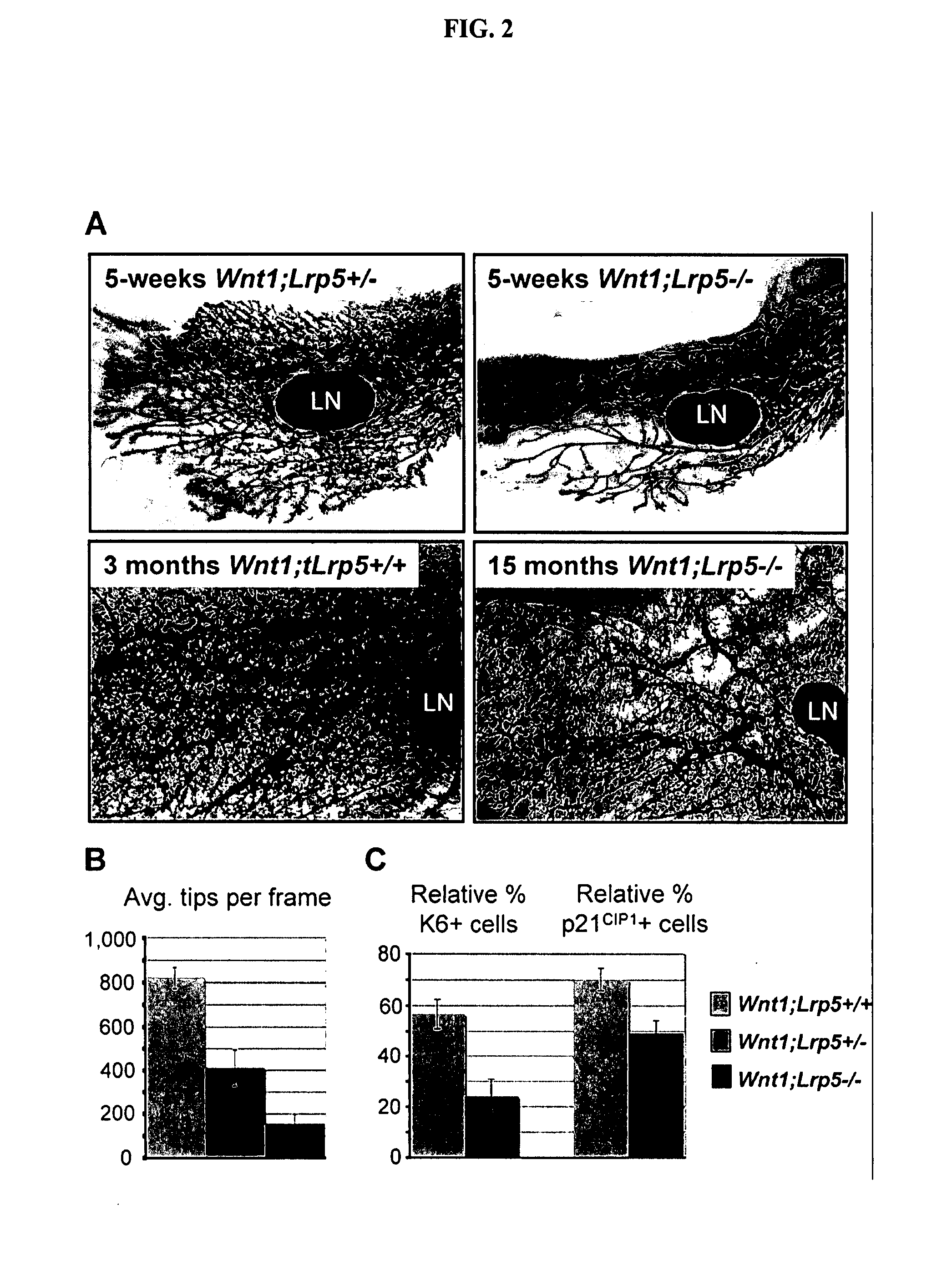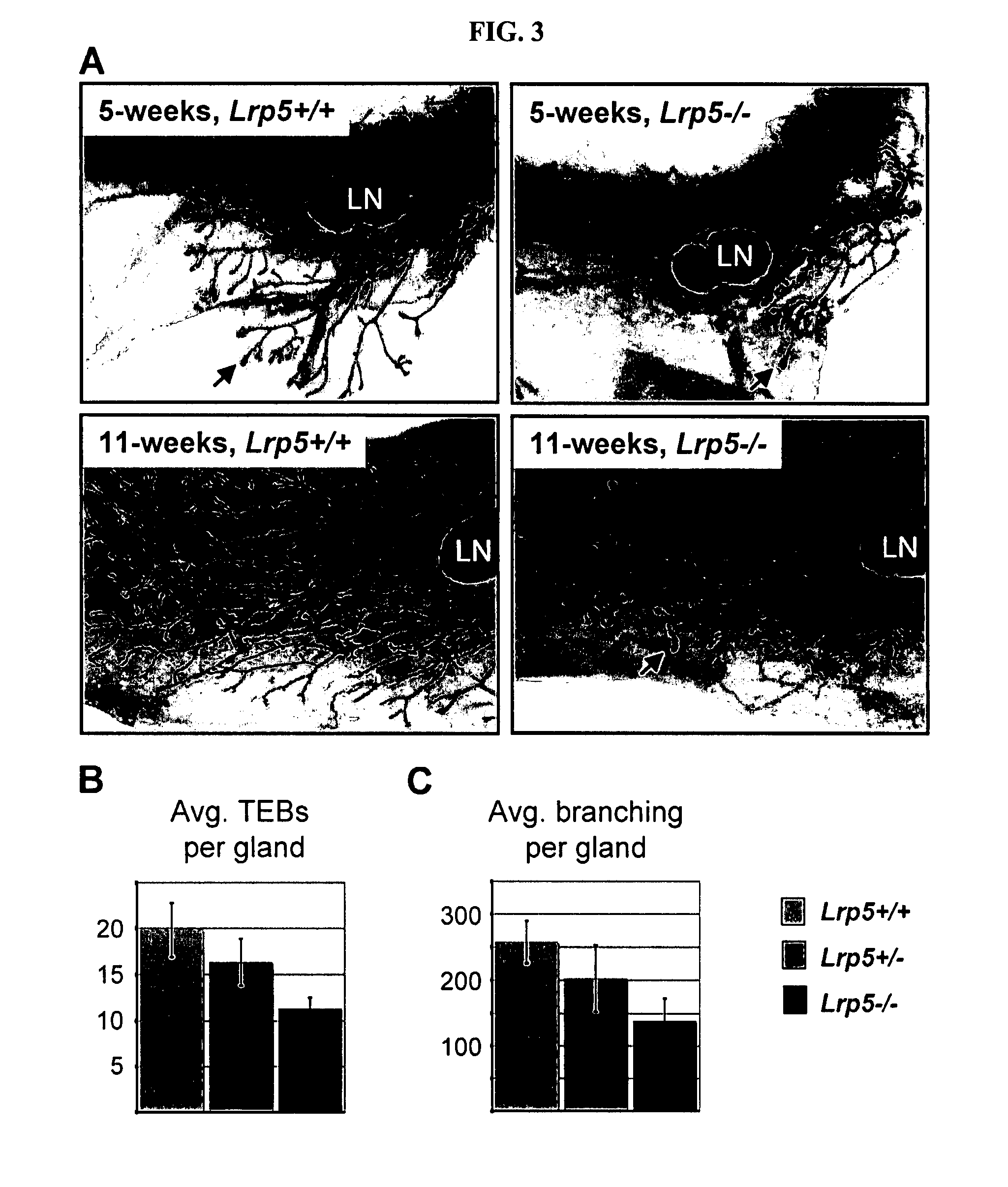Mammary stem cell marker
a stem cell and marker technology, applied in the field of mammary stem cell markers, can solve the problem of not having a single cell surface biomarker that allows substantial enrichment of somatic mammary stem cells, and achieve the effect of increasing expression
- Summary
- Abstract
- Description
- Claims
- Application Information
AI Technical Summary
Benefits of technology
Problems solved by technology
Method used
Image
Examples
example 1
The Wnt Signaling Receptor Lrp5 is Required for Mammary Ductal Stem Cell Activity and Wnt1-Induced Tumorigenesis
[0078] Canonical Wnt signaling has emerged as a critical regulatory pathway for stem cells. The association between ectopic activation of Wnt signaling and many different types of human cancer suggests that Wnt ligands can initiate tumor formation through altered regulation of stem cell populations. This example shows that mice deficient for the Wnt co-receptor LRP5 are resistant to Wnt1-induced mammary tumors, which have been shown to be derived from the mammary stem / progenitor cell population. These mice exhibit a profound delay in tumorigenesis that is associated with reduced Wnt1-induced accumulation of mammary progenitor cells. In addition to the tumor resistance phenotype, loss of LRP5 delays normal mammary development. The ductal trees of 5-week-old Lrp5− / − females have fewer terminal end buds, which are structures critical for juvenile ductal extension presumed to...
example 2
LRP5 is a Biomarker for Mammary Stem Cells
Materials and Methods
[0146] Mammary glands were obtained from 14 week old, virgin Balb / c mice. The glands were harvested and minced with fine scissors on ice. Mammary organoids were dissociated by enzymatic digestion with hyaluronidase and collagenase for six hours at 37° C. (reagents and protocol from Stem Cell Technologies, Vancouver, Canada). The mammary organoids were then further dissociated into single cells by brief trypsin and dispase exposures (reagents and protocol from Stem Cell Technologies). Single mammary epithelial cell preparations were then stained with the following rat antibodies (BD Biosciences, San Jose, Calif.): anti-CD45-APC (30-F11) and anti-CD31-APC (MEC 13.3) for 30 min at 4° C. In addition, the cells were also incubated for 30 min at 4° C. with rabbit anti-mouse LRP5 (Babij P. et al. J. Bone Miner. Res. 2003, 18:960-974) followed by incubation with Goat anti-rabbit IgG-Pacific Blue (Molecular Probes, Eugene, Ore...
example 3
LRP5 Expression in the Mammary Glands of Wild-Type and Lrp5-Null Mice as Well as MMTV-Wnt1 Transgenic Mice
[0148] Methods for immunohistochemistry for Lrp5 expression: Wild-type and Lrp5-null (Lrp5− / −, negative control) female mammary glands of congenic B6 mice and mammary glands of MMTV-Wnt1 transgenic mice (Tsukamoto A S et al. Cell 1988, 55:619-625) were isolated and fixed in 4% paraformaldehyde in PBS at 4° C. overnight. The mammary glands were then embedded in paraffin and cut at a thickness of 5 μm. The sections were deparaffinized and rehydrated. Immunohistochemistry for LRP5 was performed using rabbit polyclonal anti-mouse antibody G171V at a dilution of 1:5000. The localization of the primary antibody was identified by biotinylated anti-rabbit IgG, amplified with ABC reagent and visualized by 3,3′-diaminobenzidine (DAB) (Vector laboratories). The sections were counterstained with hematoxyline.
[0149] Results: FIG. 7 shows a section of mammary gland immunohistochemistry of a...
PUM
| Property | Measurement | Unit |
|---|---|---|
| time | aaaaa | aaaaa |
| concentration | aaaaa | aaaaa |
| median time | aaaaa | aaaaa |
Abstract
Description
Claims
Application Information
 Login to View More
Login to View More - R&D
- Intellectual Property
- Life Sciences
- Materials
- Tech Scout
- Unparalleled Data Quality
- Higher Quality Content
- 60% Fewer Hallucinations
Browse by: Latest US Patents, China's latest patents, Technical Efficacy Thesaurus, Application Domain, Technology Topic, Popular Technical Reports.
© 2025 PatSnap. All rights reserved.Legal|Privacy policy|Modern Slavery Act Transparency Statement|Sitemap|About US| Contact US: help@patsnap.com



